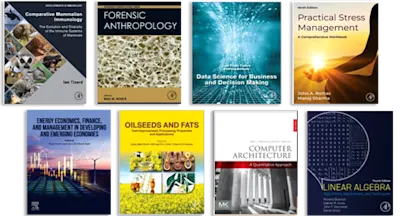
Introduction to Data Compression
- 5th Edition - October 23, 2017
- Imprint: Morgan Kaufmann
- Author: Khalid Sayood
- Language: English
- Paperback ISBN:9 7 8 - 0 - 1 2 - 8 0 9 4 7 4 - 7
- eBook ISBN:9 7 8 - 0 - 1 2 - 8 0 9 7 0 5 - 2
Introduction to Data Compression, Fifth Edition, builds on the success of what is widely considered the best introduction and reference text on the art and science of data comp… Read more
Purchase options

Introduction to Data Compression, Fifth Edition, builds on the success of what is widely considered the best introduction and reference text on the art and science of data compression.
Data compression techniques and technology are ever-evolving with new applications in image, speech, text, audio and video. This new edition includes all the latest developments in the field.
Khalid Sayood provides an extensive introduction to the theory underlying today’s compression techniques, with detailed instruction for their applications using several examples to explain the concepts. Encompassing the entire field of data compression, the book includes lossless and lossy compression, Huffman coding, arithmetic coding, dictionary techniques, context based compression, and scalar and vector quantization.
The book provides a comprehensive working knowledge of data compression, giving the reader the tools to develop a complete and concise compression package.
- Explains established and emerging standards in- depth, including JPEG 2000, JPEG-LS, MPEG-2, H.264, JBIG 2, ADPCM, LPC, CELP, MELP, iLBC and the new HEVC standard
- Includes more coverage of lattices in vector quantization
- Contains improved and expanded end-of-chapter problems
- Source code is provided via a companion website that gives readers the opportunity to build their own algorithms and choose and implement techniques in their own applications
Graduate students in data compression, multimedia, and info theory courses at CS/ECE programs; software and hardware engineers; networking and database professionals working with data and file compression
- Edition: 5
- Published: October 23, 2017
- Imprint: Morgan Kaufmann
- Language: English
KS
Khalid Sayood
Khalid Sayood received his BS and MS in Electrical Engineering from the University of Rochester in 1977 and 1979, respectively, and his Ph.D. in Electrical Engineering from Texas A&M University in 1982. In 1982, he joined the University of Nebraska, where he is the Heins Professor of Engineering. His research interests include data compression, joint source channel coding, and bioinformatics.